
Locks on classroom doors must comply with egress and accessibility requirements, and current codes mandate the ability to unlock the door from the outside with a key, credential, or other approved means.
Classroom doors are a critical point of security during an intruder situation, and today’s post (a continuation of this week’s series) will focus on just some of the many considerations related to classroom security, particularly door hardware. As a reminder, tools and solutions for physical security, like door hardware, are just one piece of the overall layered security approach recommended for schools.
In 2015, the Sandy Hook Advisory Commission’s final report recommended the following, in agreement with the Report of the School Safety Infrastructure Council (SSIC):
The SSIC Report includes a standard requiring classroom and other safe-haven areas to have doors that can be locked from the inside. The Commission cannot emphasize enough the importance of this recommendation. The testimony and other evidence presented to the Commission reveals that there has never been an event in which an active shooter breached a locked classroom door.
Accordingly, the Commission reiterates its recommendation that all classrooms in K-12 schools should be equipped with locked doors that can be locked from the inside by the classroom teacher or substitute.
For classroom access control, the PASS Guidelines expand on the recommended functionality of door locks, as a part of a school’s layered security plan:
While many types of mechanical and electronic locks are available, certain functionality is essential for classroom doors from a safety and security standpoint.
- Any lock on a classroom door should have the ability to lock the outside lever from the inside of the room.
- Openings must allow keyed or electronic access from the corridor side for access by authorized personnel without a special tool or knowledge.
- Free egress should always be possible from the inside of the room.
- Locks should have a visual indicator so that the condition of the lock (locked or unlocked) is visible to room occupants.
Some manufacturers offer code-compliant conversion or retrofit kits which are capable of converting existing locks to comply with the above requirements.
Regardless of whether mechanical or electronic locks are installed at classroom and interior openings, interior doors should comply with appropriate locally enforced building codes for new educational occupancies, existing educational occupancies, new day care occupancies, existing day care occupancies, new business occupancies, existing business occupancies and the ADA. PASS recommends that school administrators work with local life safety experts to determine code compliance related to securing classroom/interior doors.
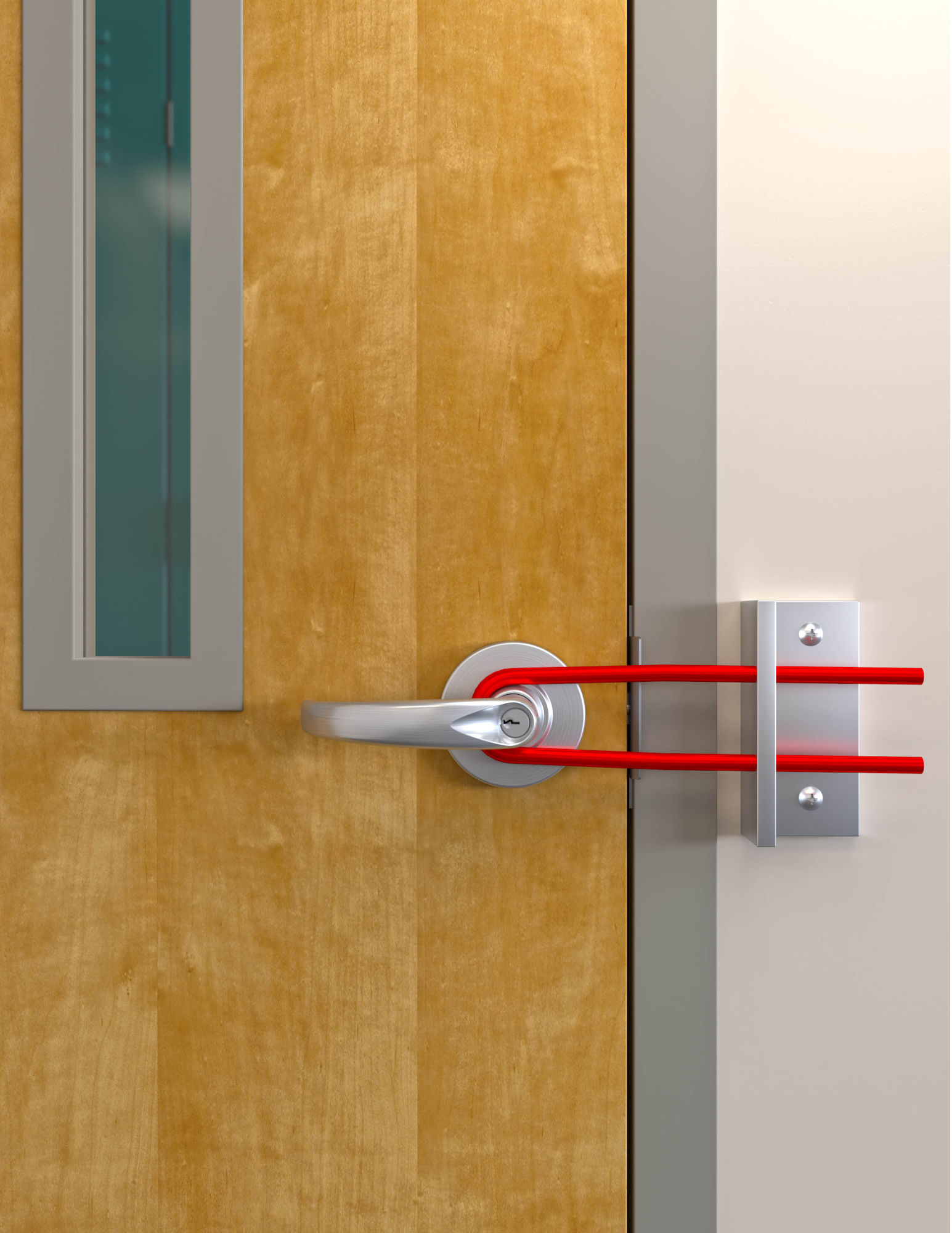
Retrofit security devices should be carefully evaluated to ensure that they comply with the code requirements for egress, fire protection, and accessibility (the type pictured here is not compliant with the model codes).
The National Association of State Fire Marshals (NASFM) has published a school security checklist, which includes additional safety considerations:
When selecting hardware which allows classroom doors to be lockable from inside the room, consideration must be given to the risks and potential consequences of utilizing a device which blocks the door from the inside potentially impeding or preventing immediate egress by occupants, at any time, and under any conditions.
Devices which prevent classroom doors from being unlocked and opened from outside the classroom may place the inhabitants of the room in peril. In addition to the requirement that classroom doors must be unlockable and unlatchable in a single motion from inside the classroom (discussed above), these doors should always be unlockable and openable from outside the classroom by authorized persons.
There are many locksets available that can be used to safely secure a classroom door from the inside without jeopardizing egress or accessibility. Classroom doors often have existing locksets that can be incorporated into the school’s security and emergency plans.
Mechanical locks may be locked from the inside with a thumbturn, push button, or key; many school security experts advise keeping classroom doors locked against ingress at all times. Indicators can help to ensure that the locked/unlocked status of the lock is visible. Electrified locks are available that can be locked from a remote location like the school’s main office, while providing convenience during normal operation. Again, with both mechanical and electrified locks, it is crucial that the door hardware allows free egress, meets the accessibility standards, and can be unlocked from the outside by an authorized person with a key, credential, or other means approved by the code official.

Electrified access control hardware can allow remote locking and unlocking of classroom doors without jeopardizing egress or accessibility.
There are various mechanical and electronic lock functions that can be used on classroom doors, depending on a school district’s lockdown plan:
- Classroom Security Function – The outside lever is locked from within the classroom using a key.
- Entrance / Office Function – The outside lever is locked from within the classroom by turning a thumbturn or pushing a button.
- Storeroom Function – The outside lever is always locked – a key is always needed to enter from the outside.
- Electronic Lockset – The outside lever may be locked from within the classroom as well as remotely – for example, all locks could be locked simultaneously during a lockdown.
In addition to the resources linked in the blog post above, this video explains the various lock functions, and there are helpful resources available from the Builders Hardware Manufacturers Association (BHMA). The PASS Safety and Security Guidelines for K-12 Schools also include information on options for securing classroom doors.
Special Note: Allegion is a member of BHMA, NASFM, and a PASS Partner.
You need to login or register to bookmark/favorite this content.

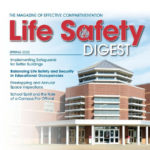
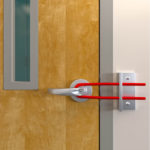
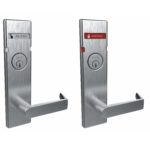
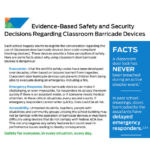



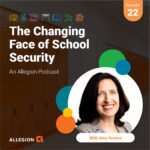
I think there are 2 critical points to classroom security that lead to the requirement of electronic locks on all classrooms.
1. Our teachers first reaction must not be to put themselves in danger by going to the door for a hanging key or magnet on the frame. First reaction must be to secure the kids. The doors should be closed at all times and locked at the push of a button. 2. I wholeheartedly disagree with the many experts who advise “keeping classroom doors locked against ingress at all times” We cannot create more problems while trying to solve another. Locked classrooms create unsafe spaces while staff needs to “find a key”
The Education Department found that reports of sexual violence at schools rose from about 9,600 in the 2015-2016 school year to nearly 15,000 in the 2017-2018 school year.
National Center for Educational Statistics reports physical assaults inside schools at a rate of 30 victimizations per 1,000 students in 2019.
In the 2015-16 school year, 5.8 percent of the nation’s 3.8 million teachers were physically attacked by a student. Almost 10 percent were threatened with injury, according to federal education data.
The doors need to remain unlocked during normal school activities.
We need a national standard that all classroom doors must remain closed and unlocked with the ability for one touch lockdown.